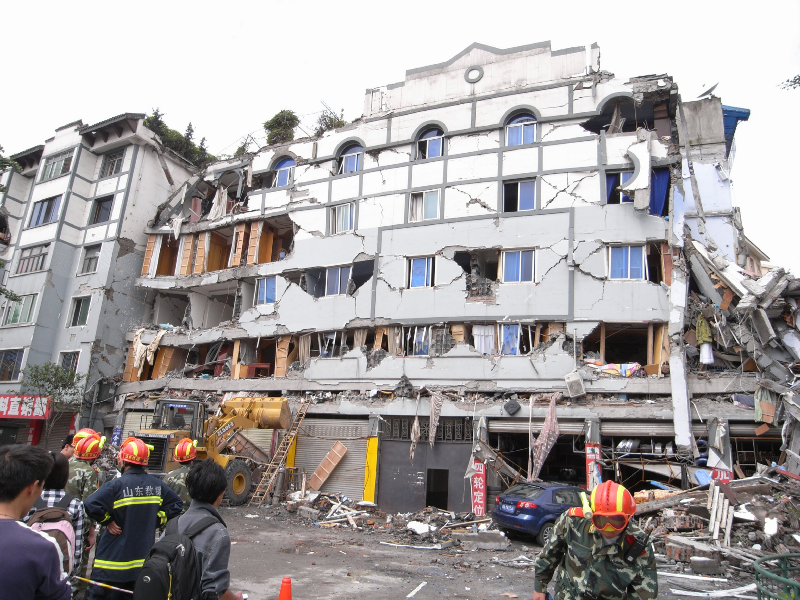Earthquakes at the nanoscale
by Ali Sundermier

In 2008, Sichuan province in China experienced a massive magnitude-7.9 earthquake caused by the collision of the Indian-Australian and Eurasian plates along the Longmenshan Fault. The earthquake, which has been ranked as the 21st deadliest quake of all time, flattened four-fifths of the structures in the affected area, destroying whole towns and villages and leaving millions of people homeless. Almost 90,000 people were killed.
Kaiwen Tian, who was born and raised in Sichuan, distinctly remembers hearing news of the quake. Although he didn’t personally know anyone who was killed, many people he knew had family or friends who died in the quake. This, Tian says, is a huge part of the reason he decided to study earthquakes.
In collaboration with Robert Carpick and David Goldsby, Tian, who graduated from the University of Pennsylvania in 2017 with a doctorate in physics, recently published a paper in Physical Review Letters which attempts to tackle these devastating natural phenomena by investigating the laws of friction at the smallest possible scale, the nanoscale.
“The big picture here is that friction is a complicated phenomenon,” says Carpick. “We all know it and experience it every day of our lives. It’s important in designing machines, in manufacturing processes, and in all sorts of natural phenomena including earthquakes, which are governed by frictional behavior at geological faults. An earthquake is a sudden slip at the interface between tectonic plates. Static friction is what is resisting that slip. When the stress that has built up in a fault exceeds the stress that friction can resist to prevent motion, you get an earthquake.”
By looking at the nanoscale, the researchers hope to develop fundamental, physically based theories about the underlying laws of friction that lead to earthquakes. Although it’s far down the line, the researchers hope that their research ultimately will enable better predictions about the onset of earthquakes as well as what will happen after they occur.
“Our approach lets us have a small, simple geometry so we know how much material is in contact,” Carpick says. “We can measure the forces occurring under very controlled conditions in our experiments. What we’re trying to do is get at the fundamental friction laws at the nanoscale as a first step toward building fundamental physically based friction laws, first for larger-scale laboratory experiments on rocks and ultimately for earthquake faults.”
Continue reading at Penn Today.
